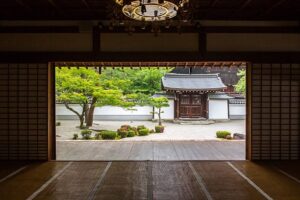Garden Maintenance
Garden Design Adelaide: How to Create a Zen Garden Design in Your Garden
Initially designed for meditation, the Zen garden features many aspects easily incorporated into any home landscape. These include gravel premises, water features, and Asian statues that introduce cultural significance to the garden.
Large rocks, gravel and sand are essential to this style of gardening. They are also heavy and require proper lifting techniques. For more zen garden design Adelaide, click here.
Create a focal point
 A focal point in a Zen garden is a critical feature that draws the eye and evokes tranquillity and harmony. This can be accomplished with various elements, including rocks, gravel, and deciduous plants. Native plants are a great option because they are easy to grow and support the local ecosystem. In addition, they add a sense of change and transition to the garden as the seasons pass.
A focal point in a Zen garden is a critical feature that draws the eye and evokes tranquillity and harmony. This can be accomplished with various elements, including rocks, gravel, and deciduous plants. Native plants are a great option because they are easy to grow and support the local ecosystem. In addition, they add a sense of change and transition to the garden as the seasons pass.Rocks and rocks are often used to represent mountains or islands, and stepping stones or pathways can lead visitors through the garden to encourage movement and reflection. Water features are also a popular choice, as they promote relaxation and reflect life’s natural ebb and flow.
Regular raking of the gravel or sand in the garden is essential, as it creates lines and patterns representing water or the ocean. In addition, weeds and unwanted plants should be removed promptly to maintain the meditative feel of the garden.
Add water
Zen gardens feature a combination of naturalistic elements and symbolism. This includes rocks, sand, and water, which all provide a calming effect. You can create a similar look in your garden with these simple ideas:
Start by selecting an out-of-the-way corner or other flat spot suitable for a meditation space. Then, clear the area, if needed. This may require professional help, especially if the soil needs to be levelled. For more zen garden design Adelaide, click here.
Fine gravel or sand is another critical feature of Zen garden design. It’s often selected in pale hues and carefully raked into patterns that mimic water. This is not only soothing to the eye, but it can also be a relaxing meditative exercise.
Similarly, trees can provide an eye-catching focal point in a Zen garden. Look for Asian maples, azaleas, and ferns that offer show-stopping colours in autumn and year-round greenery.
Add lighting
Spending time in nature is one of the most soothing things you can do, so it’s no wonder that Zen gardens often take inspiration from natural landscapes. This often crosses into the realm of symbolism, with features like rocks and moss representing more significant parts of the natural world, such as islands, mountains or forests. To add a bit of colour to this garden style, consider adding Acer trees in various shades and sizes. These leafy beauties will add show-stopping autumn tones of fiery red and work well with the natural stone and gravel.
Fine gravel or sand is also a common feature of Zen garden ideas and is usually chosen in pale hues to symbolize water. It can be raked into patterns to create ‘waves’, and making these shapes can be relaxing. Consider adding a few pagoda lights (also known as Stone Lanterns) to add more light. These are decorative and can serve both as lighting sources and art accents.
Create a meditative space
Most zen gardens feature some kind of sand or gravel that is raked into various designs. These patterns resemble how water eddies around rocks or islands or rivers flow. They also symbolize water’s energy, an essential element in Japanese gardening. For more zen garden design Adelaide, click here.
The repetitive raking of the sand or gravel helps to clear the mind and establish attentiveness. The goal is complete stillness, allowing the beholder to connect with the garden and its surroundings.
A few trees and shrubs help to create definition and privacy. Evergreens like Cryptomeria and ornamental trees like Japanese maples are popular choices. Other options include bamboo, but it’s essential to ask your local landscape professional about different variations of the plant because some are invasive. If you decide to use bamboo, consider adding it to a screened planter. It’s also a good idea to add some plants that are winter-interested.